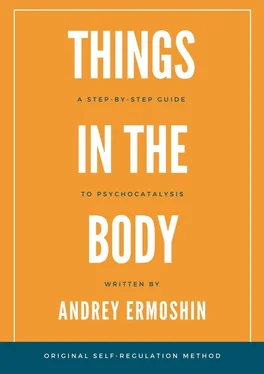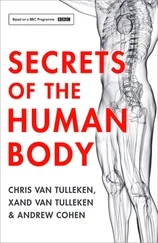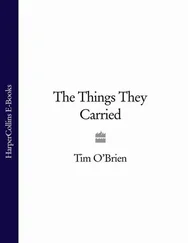This is something that determines the quantitative characteristics of the experience. It is the mass, involved in the experience of «HH», depends on how upset the state of a person. Gathering in certain places in the process of forming of pathological charges, it becomes the source of an unpleasant weight and unpleasant heat. When relaxing, the same «substance’ moves to the periphery of the former focus of tension and determines the feeling of «a pleasant heaviness’ and «pleasant heat’, described by Schultz in the book «Autogenic training». It is the HH substance that is distributed in the body in the process of calming down (we will talk about it at the therapeutic phase), acquiring the characteristics of light, air, liquid or even a thick mass, spreading in all directions, sometimes painful at first, and filling the periphery, like the long-awaited rain, irrigating fields suffering from drought.
The body is the contour map of the soul
The idea that each area of the body is simultaneously a zone of consciousness, is known since ancient times. These are Indian ideas about chakras as special energy centers, which are simultaneously centers of consciousness; Chinese ideas about energy channels in which the psychic energy “Shen’ circulates, etc. The idea of the heart as an organ of consciousness is developed in Orthodoxy. (St. Archbishop Luke (Voino-Yasenetsky); not recognized canonically.
The observations by Ferenczi, Reich and Lowen, who developed the «somatic approach» in psychoanalysis 29 29 Lowen A… Physical dynamics of character structure. – Moscow: PANI Company, 1996, p. 19.
, are significant in the context of this discussion. These authors considered the relationship between muscle tension and mental function in general. Reich formulated the thesis about the functional identity of muscle tension and emotional block. Lowen came to the idea of «functional unity of character and muscle rigidity pattern.» Earlier Freud assumed that «Self» is bodily first of all («Self and Id»): «Self», undoubtedly, is generated by bodily feelings, its sources mainly lie on a body surface». A little later we will mention Henri Bergson, who also spoke about the effects of muscle tension in the process of experiencing (back in 1889).
Those authors, consistently seeking to supplement the «analysis from above’ with the «analysis from below’ (the expression by Sandor Ferenczi), revealed the relationship between the levels of the body and experiences of various kinds. They were mainly investigating in the surface of the body: «relaxation exercises’ (Ferenci), study of «muscle shell’ (Reich), poses, body positions (Lowen).
The “good and evil’ book
Where do the equivalents of different states find their place?
Head:
– forehead – anxiety
– temples – irritation
– back of the head – responsibility, the need to control the situation
– top of the head – osteochondrosis of the spine, «poor nutrition’ of the head (later we will talk about the origin of psychic bodily sensations)
Chest: resentment, anxiety, spite, anguish, grief.
Abdomen: solar plexus area – fear, anger.
Archpriest Eugene Popov tried to present a list of «sins against the ten commandments of God.» In this book 30 30 Archpriest Eugene Popov. Moral theology for the laity. St. Petersburg, 1901. Reprinted edition. Orthodox publishing house «Rule of Faith», 1993.
there were 1087 pages. If we consider that the beginnings for sins and the beginnings for neuroses are often the same, the list of neuroses may be no less. And each of them «rents’ its area of the body. Each SPT work provides new material for the creation of a detailed atlas of «continents’ and «islands’ of experiences of the human body. Here are the most common ones, although if you want you can make a detailed map of the passions. The body acts as the «contour map’, which describes the location of the structures of consciousness.
The body is a beautiful reference point. In the register of the body marks there could appear even little things like the consequences of undeclared gratitude to the abandoned places (say, school) or discarded containers (boxes, bottles, packages). These areas are located on the sternum below the level of the nipples. Hands from shoulders to fingertips are reference points for recording relationships with trees, herbs, amphibians, birds. If a person uses a tree in their household without a sense of gratitude to it, the right humerus is tightened with a birch bark, and it turns out that shoulder is bound for a reason. If a person once burned the grass, the area of «shoulder girdle’ hurts. The sins to the birds are recorded below in the forearms, to the animals – in the legs.
So, we can assume that the «book of good and evil’, which, according to the beliefs of Christians, angels and demons read on the Day of judgement and where all the sins and virtues of a persons are recorded, are they themselves, the bodies of their souls. SPT, using psychocatalysis, helps the patient «to read’ this book before it is read to them, and to change its content, to decide which pages are to be included
The periodic system of experiences
In the periodic system by D. I. Mendeleev, the qualities of some elements, such as sodium, potassium, rubidium, cesium, are similar. All these elements belong to the same category of alkali metals. However, they repeat their qualities on new registers, having a new core charge and a new number of electronic shells. The commonality of their characteristics is explained by the fact that at the external level of all these elements have the same number of electrons that can connect with other elements. The repeatability of the characteristics of experiences in the human body resembles the repeatability of the characteristics of chemical elements in periods. The experiences are found in strictly defined parts of the physical body. The experience of a seemingly close orientation, such as anger, irritation, anger, differ precisely in the fact that they occupy different “territories.” Irritation is concentrated in the temples, spite – in the chest, anger – in the stomach.
It is known that clinical psychotherapy differs, say, anxiety and fear. What is the criterion of their differentiation? Fear is objective, anxiety is objectless. In SPT, these states, which are distinguished by the patients themselves, show their non-identity in a special way. They are experienced at different levels of the body: fear – at the level of the abdomen (animal), worry – at the level of the heart (soul), anxiety – at the level of the forehead (head).
There are several such «rows.»
Multipolarity of experiences and dreams
In somatic analysis some dreams can be traced to an interesting phenomenon: the different parts of the dreams correspond to sensations in different areas of the body. As an example, there are some dreams of M., a young man, who was prone to drunkenness. He dreams that he is between two slopes of the mountains, in front of him there is a big pile of shit, and behind him there rolls a huge ball.
When asked about the feelings associated with each part of the dream, he replied as follows. The image of «the pile of shit’ corresponds to the feeling in the forehead. There is a plate of parabolic antenna there. This corresponds to his experience of self-concern: «I am aware of it, I understand it. I do not want to get there,» says the patient.
The feeling, associated with the image of «a huge rolling ball’, is experienced in the stomach. There is a huge heavy lump of fear.
Читать дальше












